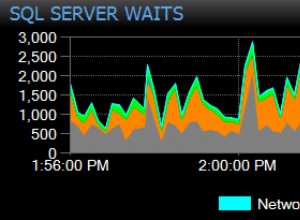Sei partito davvero bene, ma potresti averci pensato un po' troppo. Il trucco è creare una query con segnaposto (? ) come stringa e contemporaneamente costruisce una matrice di valori.
Quindi, se hai params = { name: 'foo', age: 40 } , vuoi costruire i seguenti oggetti:
where = 'name LIKE ? AND age = ?';
values = [ '%foo%', 40 ];
Se hai solo { name: 'foo' } , creerai invece questi:
where = 'name LIKE ?';
values = [ '%foo%' ];
In ogni caso, puoi utilizzare quegli oggetti direttamente nella query metodo, ovvero:
var sql = 'SELECT * FROM table WHERE ' + where;
connection.query(sql, values, function...);
Come costruiamo quegli oggetti, allora? In effetti, il codice è molto simile al tuo buildQuery funzione, ma meno complessa.
function buildConditions(params) {
var conditions = [];
var values = [];
var conditionsStr;
if (typeof params.name !== 'undefined') {
conditions.push("name LIKE ?");
values.push("%" + params.name + "%");
}
if (typeof params.age !== 'undefined') {
conditions.push("age = ?");
values.push(parseInt(params.age));
}
return {
where: conditions.length ?
conditions.join(' AND ') : '1',
values: values
};
}
var conditions = buildConditions(params);
var sql = 'SELECT * FROM table WHERE ' + conditions.where;
connection.query(sql, conditions.values, function(err, results) {
// do things
});




